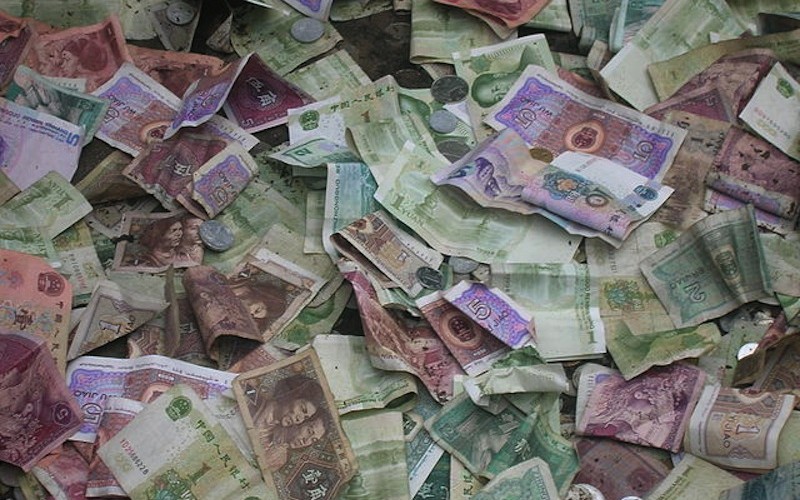The People’s Bank of China (PBoC) has flooded China’s financial system with record amounts of cash this past week to pre-empt the annual liquidity crunch ahead of the Lunar New Year in early February. The central bank is cautiously refraining from cutting interest rates or the reserve requirement ratio (RRR), as it fears that the traditional monetary easing tools may send the already weakening renminbi down even further.

The People’s Bank of China (PBoC) pumped a net RMB 690 billion into China’s banking system this past week through open market operations, marking the largest single-week injection on record. The move brought the net cash injections this month to RMB 1.9 trillion, including RMB 1.235 trillion via reverse purchase agreements (repos) and RMB 612.5 billion through medium-term loans.
While the usual auction windows are on Tuesday and Thursday, the monetary authority pledges to increase the frequency of its cash injections to a daily basis between January 29th and February 19th, except during the weeklong Lunar New Year holiday that begins on February 7th.
The central bank’s aggressive cash injections came to pre-empt the annual, holiday-induced liquidity squeeze around the Lunar New Year. Cash demand typically spikes ahead of the most celebrated holiday in China, when people traditionally travel, dine out more and exchange cash and gifts. But in addition to seasonal factors, the central bank faces unusual challenges this year as it battles the gigantic capital outflows that risk draining much-needed liquidity out of the economy. China’s estimated 2015 total capital outflows reached USD 1 trillion, according to Bloomberg.
The slowing Chinese economy and the bias towards overseas investments are at the root of the country’s capital flight problem. But speculation of continuing renminbi devaluation, compounded by the Federal Reserve rate hike in December, drives even more funds out of the world’s second largest economy.
The PBoC now finds itself facing conflicting goals: while the central bank strives to maintain renminbi stability and prevent the currency from weakening further, it must keep cash flowing in the financial system to avoid liquidity shortage.
Fearing that system-wide easing measures would send too strong a signal to the market and put unwanted downward pressures on the renminbi, the PBoC is shying away from the traditional monetary easing tools of interest rates and RRR cuts. Leaked minutes from a PBoC meeting on January 19th with commercial lenders reveal the central bank’s reluctance to conduct across-the-board easing.
“Currently, we need to put a high emphasis on maintaining the renminbi’s stability when managing liquidity,” Zhang Xiaohui, an assistant central bank governor, said at the meeting.
Though the PBoC traditionally releases extra money during the holiday season to prevent cash machines from drying up, its cash injections this year is notable for their sheer scale and the monetary authority’s circumspection. The recent rounds of cash injections are the central bank’s latest attempts to explore alternative instruments for monetary easing.
Compared with interest rates and RRR cuts, open-market operations and medium-term lending are more flexible tools to increase money supply in the economy. Whereas interest rates and RRR cuts are rigid and permanent unless the central bank reverses its rulings, cash supplied through reverse repos and its medium-term lending facility is temporary and will disappear from the financial system after their expiration dates.
Moving forward, the PBoC faces an unusual dilemma as it strives to stem renminbi devaluation and rapid capital outflows and struggles to keep borrowing costs low and shore up the faltering economy.
Although monetary easing will remain relevant in softening the blow of the slowing economy, China will lean more on fiscal tools to spur growth in 2016 as the weakening renminbi and eye-popping capital flight are tying its hands when it comes to adopting aggressive monetary easing measures. China is likely to further widen its fiscal deficit, as the government turns to tax cuts and government spending to ward off economic headwinds.
sourche: http://globalriskinsights.com/2016/02/china-explores-its-monetary-easing-toolkit/
Δεν υπάρχουν σχόλια:
Δημοσίευση σχολίου